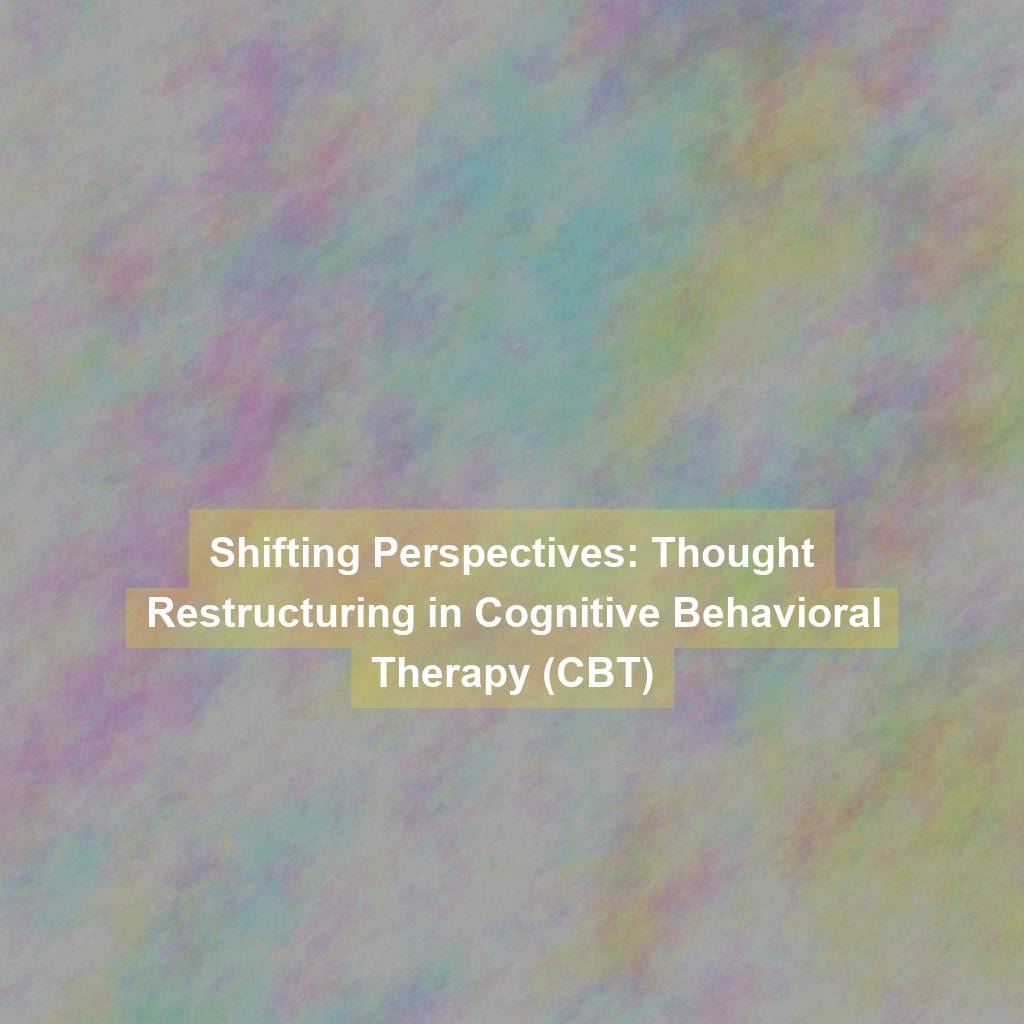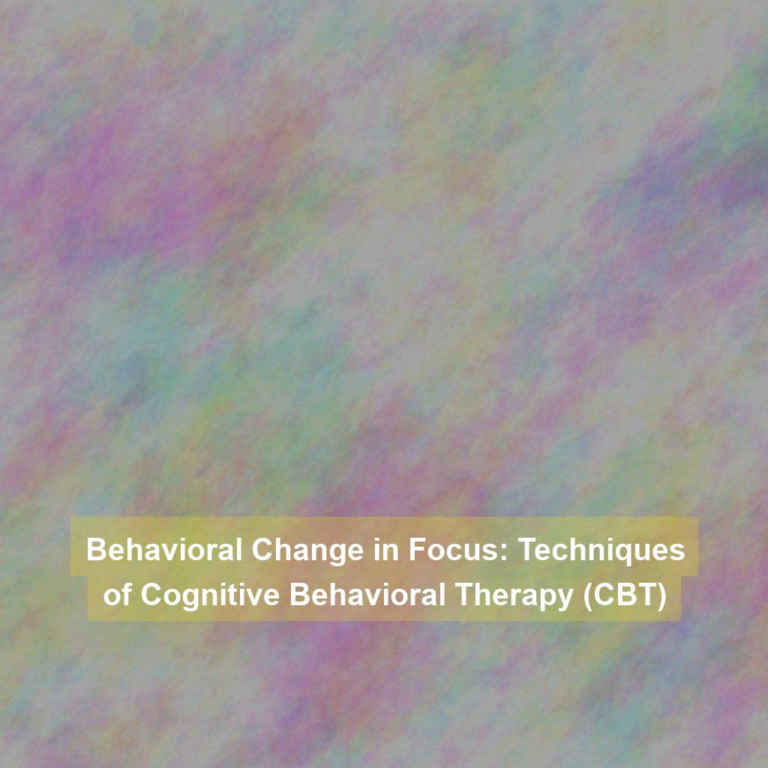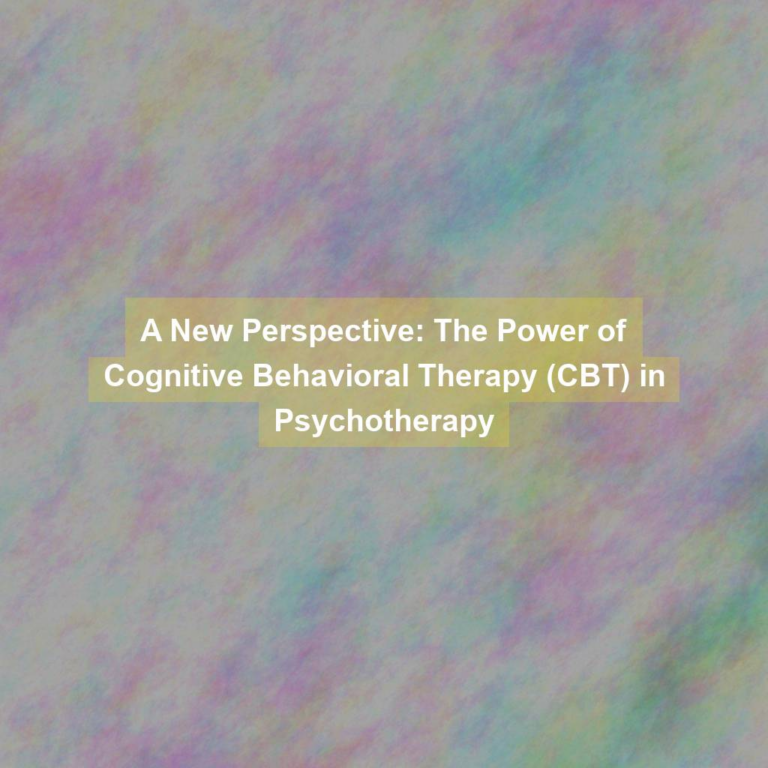Have you ever considered how much control you have over your thoughts? Cognitive Behavioral Therapy (CBT) suggests that our thoughts greatly influence our emotions and behaviors.
But is it truly possible to restructure our thoughts and shift our perspectives? The answer lies in the techniques and strategies employed in CBT, which aim to challenge and modify negative thought patterns.
As you explore the impact of thought restructuring on perspectives, you’ll uncover the potential for promoting positive mental well-being through this therapeutic approach.
Understanding Thought Distortions
To understand thought distortions, you need to recognize how they can influence your perceptions and beliefs. These distortions are like a pair of tinted glasses through which you view the world. They can skew your interpretation of events, leading to negative emotions and behaviors.
For example, if you have the ‘all-or-nothing’ distortion, you might see things in black and white, without acknowledging the shades of gray in between. This can lead to feelings of failure when things don’t go perfectly. Another common distortion is ‘catastrophizing,’ where you magnify the importance of a negative event and imagine the worst possible outcome. This can lead to heightened anxiety and stress.
Techniques for Challenging Negative Thoughts
Understanding thought distortions is a crucial first step in learning techniques for challenging negative thoughts in cognitive behavioral therapy. Once you’ve identified these distortions, it’s time to employ specific strategies to challenge and reframe them.
One effective technique is cognitive restructuring, where you actively question and challenge your negative thoughts. By asking yourself for evidence supporting or contradicting your negative beliefs, you can begin to break down their power over you.
Another powerful tool is the use of positive affirmations. By repeatedly affirming positive statements to yourself, you can gradually shift your mindset and counteract the negative thoughts.
Additionally, behavioral experiments are valuable in testing the validity of your negative thoughts. Engaging in small, manageable actions that contradict your negative beliefs can provide tangible evidence that challenges their accuracy.
Furthermore, mindfulness and grounding techniques can be employed to bring your focus to the present moment and distance yourself from the negative thought patterns. These techniques, when practiced consistently, can contribute to significant changes in your thought patterns and overall well-being.
Modifying Distorted Beliefs
By challenging and reframing your distorted beliefs, you can actively work to modify them and create more adaptive thought patterns. Cognitive Behavioral Therapy (CBT) emphasizes the importance of acknowledging and modifying distorted beliefs to foster a healthier mindset.
One common type of distorted belief is ‘catastrophizing,’ where you automatically anticipate the worst possible outcome in a situation. To modify this belief, CBT encourages you to gather evidence that both supports and contradicts the catastrophic thought. By doing so, you can develop a more balanced perspective and reduce the intensity of the distorted belief.
Another distorted belief is ‘black-and-white thinking,’ where you see situations as all good or all bad, with no middle ground. To modify this belief, CBT suggests identifying shades of gray in the situation and challenging the extremes.
Impact of Thought Restructuring on Perspectives
Challenging and reframing your distorted beliefs through cognitive restructuring in CBT can profoundly impact your perspectives, leading to a more balanced and adaptive mindset. As you engage in this process, you begin to recognize that your thoughts aren’t always accurate reflections of reality. By actively challenging and replacing these distorted beliefs with more realistic and constructive ones, you gradually shift your perspective from a rigid, negative outlook to a more flexible and positive one.
This shift in perspective can bring about a significant change in how you perceive yourself, others, and the world around you. You may find yourself becoming more open-minded, empathetic, and understanding as you start to see situations from different angles. The impact of thought restructuring on your perspectives can also lead to an increased sense of control and empowerment. Instead of feeling overwhelmed by negative thoughts, you begin to recognize your ability to influence and change them, which can be incredibly liberating.
Furthermore, this change in perspective can enhance your problem-solving skills and resilience, enabling you to approach challenges with a more optimistic and resourceful mindset. As your perspectives become more balanced and adaptive, you may find yourself better equipped to navigate life’s ups and downs with confidence and clarity.
Promoting Positive Mental Well-Being Through Thought Restructuring
To promote positive mental well-being through thought restructuring, it’s essential to actively engage in recognizing and replacing distorted beliefs with more realistic and constructive ones. This process involves developing a heightened awareness of your thoughts and their impact on your emotions and behaviors. By consciously challenging negative or irrational beliefs, you can begin to reframe them in a more balanced and rational manner. It’s important to understand that this isn’t about ignoring or denying difficult emotions, but rather about developing a more balanced perspective that considers both the positive and negative aspects of a situation.
Furthermore, actively seeking out evidence that contradicts negative thoughts can help in building a more realistic and optimistic outlook. This evidence-based approach can serve as a powerful tool in promoting positive mental well-being. Additionally, incorporating positive affirmations and gratitude practices into your daily routine can further support the process of thought restructuring, helping to cultivate a more positive mindset.
In essence, promoting positive mental well-being through thought restructuring involves actively challenging and replacing distorted beliefs, seeking out evidence to support more balanced perspectives, and integrating positive practices into daily life. By doing so, you can foster a more constructive and optimistic outlook, ultimately contributing to improved mental well-being.
Conclusion
So, as you can see, cognitive behavioral therapy (CBT) offers effective techniques for challenging negative thoughts and modifying distorted beliefs.
By understanding thought distortions and actively working to restructure them, individuals can experience a significant impact on their perspectives and overall mental well-being.
With the right tools and support, promoting positive mental health through thought restructuring is achievable and can lead to a more balanced and fulfilling life.







